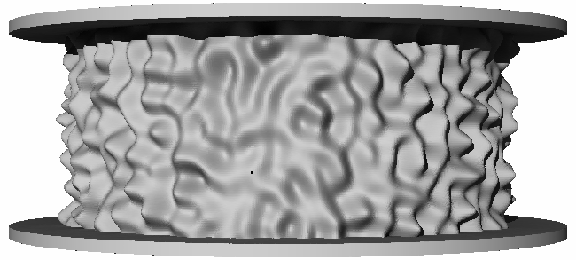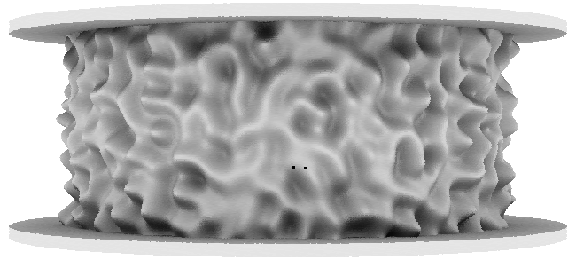Shape
from Shading
The two images below show the same surface under two different lighting
conditions. The image on the left was illuminated by with a
parallel light source (as on a sunny day). The image on the
right was illuminated by a diffuse light source, as on a cloudy
day.
How can a vision system estimate the shape of such surfaces from either
one of the images? The usual way to approach this "shape
from shading" problem is to assume that the lighting condition and the
surface material are known, and then to estimate a 3D shape that can
account for the given image intensities. Many
researchers had proposed solutions to this problem for images such as
on the left, in which the light source is collimated as on a sunny
day. In my Ph.D. thesis, I addressed problem for
images such as shown on the right in which the light source is diffuse
such as on a cloudy day.
This shape-from-shading problem can also be addressed for human
vision. For example, you can "see for yourself" that,
in the image on the left, the little isolated black square is sitting on
a local hill, not in a valley. Similarly, for the pair
of little black squares in the image on the right, the right dot
is slightly higher on the surface than the left dot.
Although you might not be completely certain about such judgments and
you might sometimes be wrong, your visual system does remarkably
well in making these judgements. For more info, see
the papers below and refs therein.
Selected Publications
- A prior for global convexity in local shape from
shading, M.S. Langer and H. H. Buelthoff,
Perception. 30(4):403-410, 2001. (PDF)
- Depth discrimination from shading under diffuse
lighting, M.S. Langer and H. H. Buelthoff, Perception.29
(6) 649-660, 2000. (PDF)
- Towards Accurate Recovery of Shape from Shading under
Diffuse Lighting, A.J. Stewart, M.S. Langer,
IEEE Trans. on Pattern Analysis and Machine Intelligence. 19(9):1020-1025,
1997. (PDF)
- Shape from Shading on a Cloudy Day, M.S.
Langer, S. W. Zucker, Journal of Optical Society of
America. 11: 467-478, 1994. (PDF)



